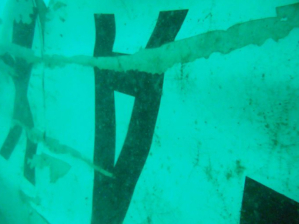
Indonesia has announced that its search-and-rescue teams have found a tail connected to AirAsia Flight QZ8501, bringing up hopes that the black boxes of the doomed plane are closer to being found.
The Airbus 320 tail, which was found this week along Indonesia's Java Sea according to John Bacon of USA Today, is a key discovery in helping to determine what brought down Flight 8501 on Dec. 28, which had 162 passengers and crew aboard. AirAsia released a statement about the search operations.
"The SAR (search and rescue) team was able to continue the search operations this morning despite the less than ideal weather conditions with some light rain and clouds," AirAsia said in a statement. "Sea divers were deployed to continue with the underwater search."
AirAsia added that the search is now focused on finding the black boxes. Bacon noted that the tail should contain the voice recorder and data boxes.
"However, due to swift underwater currents and limited visibility, the divers were only able to find more debris, which is presumed to be the interior part of the aircraft and baggage compartment," the statement said.
Cindy Silviana and Kanupriya Kapoor of Reuters reported that the plane's tail was found on Wednesday about 30 km (20 miles) from the plane's last known location at a depth between 28 and 32 meters. However, search and rescue agency coordinator Suyadi Bambang Supriyadi told reporters that recovery efforts have been hampered by bad weather.
"The weather prevented the operation to lift the tail today," Supriyadi said.
Supriyadi elaborated to reporters on how the search-and-rescue teams will extract the tail from the relatively shallow waters of the Java Sea.
"The operation using (a) balloon to lift the tail will start tomorrow," Supriyadi said.
According to USA Today, ping-emitting beacons in the black boxes still have about 20 days of battery life left. Ping locators, which are dragged by ships, have been difficult to deploy because of high waves near the crash site.
Nurcahyo Utomo, an Indonesian investigator of the National Commission for Transportation Safety, told USA Today that six ships with ping locators were in the search area. He thought that based on pictures taken by divers, the black boxes could still be attached to the plane's tail.
"Once detected, we will try to find and lift up the black boxes as soon as possible," Utomo said.
Reuters reported that Indonesia's National Transportation Safety Committee, or NTSC, is leading the probe into what caused the crash, and France's BEA crash investigation agency has followed suit.
According to USA Today, divers recovered four bodies on Thursday, raising the total number of bodies recovered at sea to 44. The cause of the crash remains unknown, but Indonesia's weather bureau thought seasonal tropical storms common in the area could have played a factor, according to Reuters.







